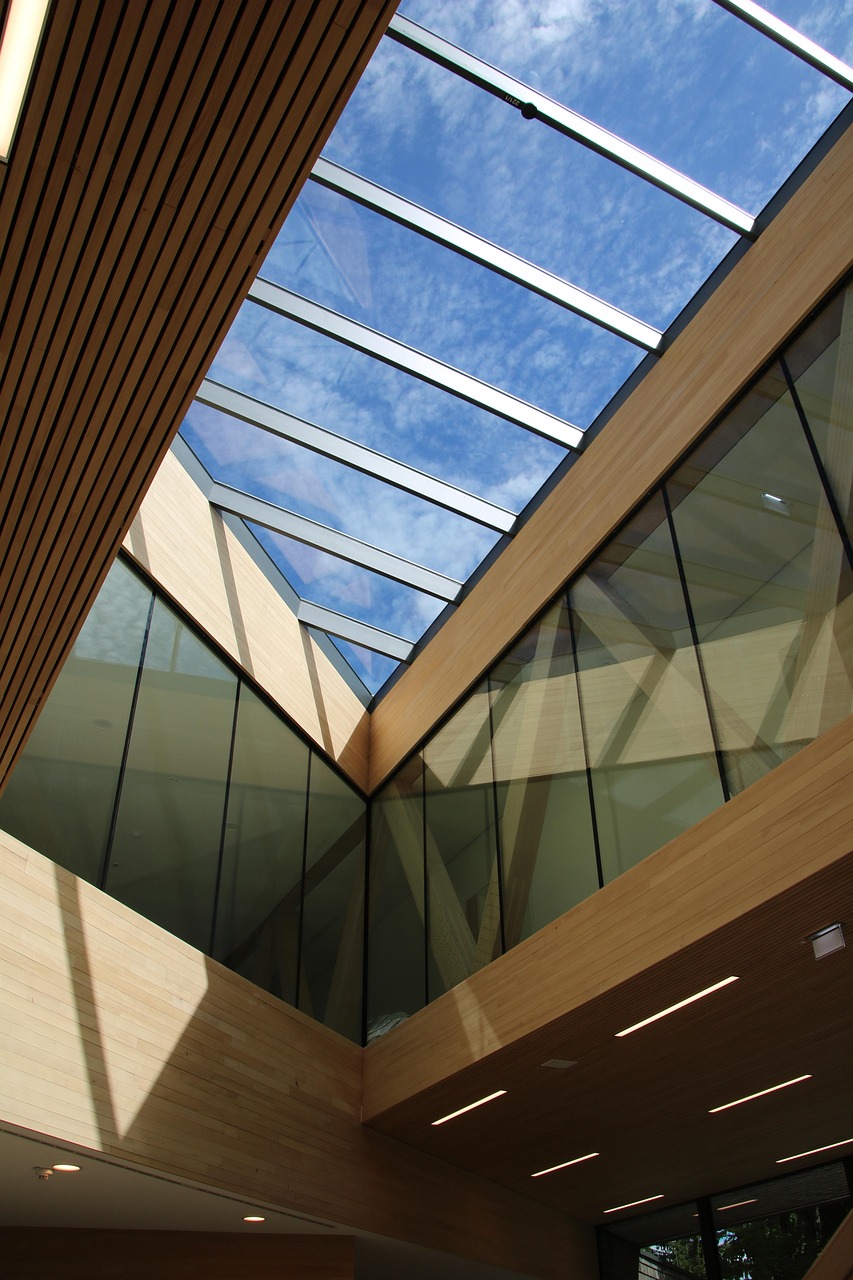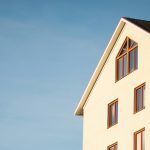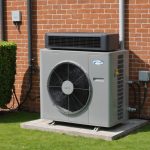Fixed rooflights bring abundant natural light to spaces without compromising insulation or security. Ideal for rooms where ventilation isn’t needed, they offer durable, stylish daylight solutions tailored for flat roofs. Discover diverse designs—from budget-friendly flat glass to walk-on units and elegant lanterns each providing unique benefits and installation considerations to brighten your home efficiently and attractively.
Overview of Fixed Rooflights for Modern Building Design
The Fixed Rooflights to Enhance Natural Light are an essential component in contemporary architecture, combining functionality with sleek aesthetics. They serve primarily to flood interior spaces with natural daylight, creating bright, inviting environments while maintaining energy efficiency. Unlike opening skylights or roof vents, fixed rooflights are designed without mechanical opening parts, emphasizing simplicity and low maintenance.
Also to read : Unlock your potential with expert leadership coaching
Key Advantages for Residential and Commercial Buildings
- Maximized Light Entry: Fixed rooflights are ideal for spaces needing abundant daylight without the need for ventilation. They are especially effective in areas such as extensions, conservatories, or loft conversions, where natural light can influence mood and productivity.
- Cost-Effective Solutions: Their straightforward design leads to lower manufacturing and installation costs. All fixed rooflight products typically come with necessary fixings and detailed guides, ensuring proper fitting and reduced labor expenses.
- Enhanced Aesthetics: Many models feature frameless or slimline profiles, contributing to a modern look. They can be custom-sized, colored, or glazed with various options, including tinted or self-cleaning glass.
- Thermal Performance: Many fixed rooflights are now triple glazed or incorporate energy-efficient coatings. These features improve insulation, reduce heat loss, and mitigate condensation issues.
Importance of Selecting the Right Type for Specific Roof Types
Choosing the correct fixed rooflight depends on the roof’s pitch, material, and intended use:
- For flat roofs, products such as the triple glazed self-clean or frameless flat glass options are popular. They are designed to prevent water ponding and provide a sleek, waterproof finish.
- Pitched roofs benefit from specifically tailored models like Velux pitched roof windows or fixed rooflights compatible with various roof pitches. These are engineered to ensure proper water runoff and structural integrity.
- Walk-on fixed rooflights offer practical solutions for accessible roofing areas, blending daylight enhancement with safety features.
By selecting suitable options, homeowners and architects ensure a seamless integration with the building’s architecture, maximizing natural light, and ensuring durability.
Also to read : Discover bespoke services with croydon's estate agents
Types and Applications of Fixed Rooflights
Fixed Flat Rooflights for Flat Roofs
Fixed flat rooflights for modern homes have become a mainstay in contemporary architecture due to their ability to introduce large quantities of daylight into living spaces. These units are purpose-built for flat roof applications, providing a seamless, low-profile appearance that complements minimalist design trends. Their compatibility with modern roofing membranes ensures a strong bond between the roof structure and the fixed glass rooflights, contributing to effective weatherproofing and sealing. This construction not only enhances durability but also simplifies the fixed rooflights installation guide process, reducing the risk of leaks over time.
For extensions, conservatories, and even commercial spaces, fixed rooflights compatible with flat roofs are engineered to handle the unique drainage requirements posed by minimal pitch angles. High-performance weather-resistant materials and sealed, slimline frame designs support low maintenance fixed glass rooflights, making them an affordable fixed rooflights for budget projects without compromising on aesthetic or performance. Advances like fixed rooflights with UV protection and anti-condensation technologies, plus optional self-cleaning coatings, help minimise ongoing upkeep.
Fixed Rooflights for Pitched Roofs
Fixed rooflights designed for pitched roofs require rigorous engineering to accommodate various roof pitch angles while remaining watertight and compliant with building regulations. These fixed rooflights for pitched roofs usually feature frames shaped to fit securely within the rafter and batten structure of a pitched or sloped roof, preventing water ingress and supporting the roof’s overall weather resistance. Their use in residential properties, especially heritage or listed buildings, means fixed glass rooflights types and benefits often include discreet profiles and materials compatible with older masonry or timber rafters for a harmonious exterior.
Fixed rooflights fitting on flat vs pitched roofs requires specialist attention to both the angle and support system beneath the installation, which impacts energy-saving fixed rooflights technology and waterproofing measures. In conservation areas or sensitive residential projects, bespoke fixed rooflights solutions allow for custom frame finishes and glazing tailored to maintain the building’s historic character while delivering fixed rooflights for natural daylight enhancement and enabling impressive daylight harvesting capabilities.
Triple Glazed Fixed Rooflights and Energy Efficiency
Triple glazed fixed rooflights energy efficiency is a significant draw for new builds and retrofits alike. The addition of a third glass pane creates enhanced thermal insulation, limiting heat loss during winter while helping control heat gain in summer. This directly impacts fixed rooflights impact on energy bills, frequently leading to reductions in both heating and cooling costs for households and businesses. High-specification fixed glass rooflights types and benefits, such as fixed rooflights with solar control glass or laminated safety glazing, contribute to both safety and fixed rooflights for commercial buildings compliance.
Selecting triple glazed models also optimises acoustic insulation, supporting noise reduction with fixed rooflights, especially in urban homes. Fixed rooflights thickness and glazing options range from double up to triple, or even quadruple layers, allowing for tailored solutions matched to project-specific sustainability goals and comfort requirements. Fixed rooflights manufacturers and brands often highlight these energy-saving credentials, with leading models designed for easy installation and long warranty periods. This makes them a superior choice for eco-friendly building design, contemporary renovations, or large-scale daylight harvesting projects.
Materials, Design, and Installation Considerations
Fixed Rooflights Durability and Materials
Durability in fixed flat rooflights for modern homes hinges on the selection of robust frame materials. Aluminum and uPVC are the most common choices, enabling fixed rooflights compatible with flat roofs and fixed rooflights designed for pitched roofs to remain highly resistant to corrosion and weather damage. Aluminum offers superior longevity thanks to its inherent structural strength and low maintenance needs, making it a leading option for fixed glass rooflights types and benefits. uPVC provides good performance at a lower cost, which appeals to projects seeking affordable fixed rooflights for budget projects without compromising basic weatherproofing or thermal performance.
Thicker triple glazed fixed rooflights energy efficiency models utilize premium materials that improve thermal insulation, supporting a reduction in energy use while enhancing natural daylight for living spaces. These modern design fixed rooflights ideas also typically include weatherproofing systems, such as quality gaskets and sealed joints. This ensures fixed rooflights weatherproofing and sealing even in challenging conditions on both flat and pitched roofs. For fixed rooflights for residential properties aiming for low maintenance and durability, select frames and glazing materials that meet relevant fixed rooflights safety features and standards.
Slimline fixed flat rooflights and low profile fixed rooflights are increasingly favored, blending effortlessly into both contemporary and traditional designs. These options are especially effective for fixed rooflights for conservation areas requiring sensitive solutions that do not disrupt building aesthetics or exterior lines.
Frame Materials: Aluminum vs. uPVC
Comparing fixed rooflights frames: aluminum vs uPVC starts with strength and corrosion resistance. Aluminum frames offer powerful support for large fixed rooflights with enhanced thermal breaks, making them suitable for commercial buildings and residential properties requiring wider spans and fixed rooflights for large openings. Their low-maintenance surfaces resist pitting and fading, and custom powder-coated finishes provide flexibility for fixed rooflights color and finish options.
uPVC frames are valued for their thermal efficiency and budget-friendly prices. While not as robust as aluminum, they are excellent for fixed rooflights for single-storey houses or projects where cost and easy installation are priorities. Both frame types withstand harsh weather, but aluminum delivers a sleeker appearance for fixed rooflights in modern architecture and slimline designs found in bespoke fixed rooflights solutions.
Glazing Options and Additional Features
Fixed rooflights thickness and glazing options directly affect energy efficiency, safety, and user comfort. Triple glazing, prevalent in triple glazed fixed rooflights energy efficiency solutions, maximizes thermal insulation and reduces noise transmission. Tinted, self-cleaning, and UV-protective glazing address fixed rooflights protection against UV rays and help cut cleaning frequency, providing low maintenance fixed glass rooflights especially for difficult-to-access locations.
Laminated glass boosts safety and meets fixed rooflights glazing safety standards, vital in high-traffic areas or fixed rooflights for creating light wells within busy environments. Glazing type also impacts the distribution of daylight, crucial for fixed rooflights and daylight distribution within expansive interiors or deep-plan buildings. For projects requiring further control, integration of fixed rooflights with integrated blinds or consideration for fixed rooflights ventilation accessories may optimize comfort and empower building occupants to adjust lighting and heat gain as needed.
Installation Guide and Best Practices
Installation of fixed flat rooflights for modern homes and fixed rooflights installation for pitched roofs share several core steps. Begin with precise measurement and preparation of the roof opening to fit the chosen fixed rooflights dimension options. Place the frame onto either a prepared kerb or structural upstand—selecting a method compatible with both the roof construction and fixed rooflight roofing membrane compatibility. Waterproofing is a key focus, with flashing kits (often purchased separately) forming a secure seal around the frame to prevent water ingress and maintain fixed rooflights moisture resistance.
On flat roofs, careful attention to the pitch—typically a minimum of 5 to 7 degrees—is crucial to prevent water ponding and assist drainage. Pitched rooflight installations benefit from gravity-assisted water flow, but still require robust sealing for weather resistance. For all roof types, adherence to fixed rooflights and building regulations compliance and manufacturer instructions is necessary to ensure warranty coverage and service life. Lastly, always follow fixed rooflights installation guide resources provided by reputable fixed rooflights manufacturers and brands, as incorrect fitting can reduce durability and compromise fixed rooflights lifespan and warranty.
Cost, Maintenance, and Long-term Performance
Understanding the pricing, upkeep, and durability of fixed rooflights is key when considering them for modern homes or large renovations. Fixed flat rooflights for modern homes typically fall into a broad price range, influenced by size, glazing type, and frame material—entry-level models start from around £372+VAT for basic 600mm x 600mm units, while advanced configurations with triple glazing or bespoke decorative finishes can reach over £2,000+VAT. The cost for fixed rooflights compatible with flat roofs may also vary depending on whether the installation requires separate flashing kits or comes as a fully pre-assembled, kerb-ready solution.
Budget-friendly options exist for both commercial buildings and high-volume residential projects. Affordable fixed rooflights for budget projects commonly employ standard double glazing, uPVC frames, or slimline profiles to keep costs down. While basic models ensure the essential benefit of natural daylight enhancement, upgrades such as triple glazed fixed rooflights energy efficiency or advanced solar control glass can help minimize energy bills and improve insulation, especially vital in urban homes or eco-friendly building design. The initial investment should always be weighed against potential long-term savings in heating and lighting.
Maintenance for fixed glass rooflights types and benefits remains straightforward due to their non-opening nature. A low-maintenance fixed glass rooflight only requires occasional cleaning to preserve clarity and optimize light transmission. Gentle washing with mild soap and warm water is sufficient; for units with self-cleaning coatings, rainfall often helps maintain a clear view. Annual inspections are advisable to assess weatherproofing, check seals, and confirm that the UV protection and thermal breaks remain intact—safeguarding their performance for both residential properties and commercial buildings.
Warranty terms for fixed rooflights manufacturers and brands range between 1 to 2 years as standard, covering typical manufacturing defects and weather resistance. Longer-lasting support is likely when using premium materials such as aluminum frames, which are less prone to warping or corrosion—crucial for fixed rooflights durability and materials. The expected lifespan of quality fixed rooflights designed for pitched roofs or flat roofs can easily surpass two decades if they are specified, installed, and maintained correctly.
Noise reduction, condensation prevention, and UV shielding also add to the long-term value. Features such as anti-condensation glass, integrated solar control, and self-cleaning coatings can limit routine maintenance and protect interiors from fading or excess heat gain. In all, fixed rooflights cleaning and maintenance advice boils down to regular care, use of appropriate cleaning products, and prompt action if any signs of leaks or condensation appear—ensuring the rooflight’s clarity, waterproofing, and insulation properties continue performing as expected.
Comparing Fixed Rooflights with Other Skylight Types
Fixed Rooflights vs Opening Rooflights Comparison
Precision: Fixed rooflights are non-opening units, maximising natural light while remaining sealed, unlike opening skylights that provide ventilation.
Fixed flat rooflights for modern homes excel in delivering uninterrupted sunlight, perfect for rooms prioritising natural illumination over airflow. Their fully sealed design means low maintenance fixed glass rooflights—no moving parts, reducing wear and extending lifespan. By contrast, opening types support active ventilation but require regular checks and occasionally complex mechanisms. Choosing between these depends on your space’s demands: fixed rooflights compatible with flat roofs suit kitchens, hallways, or offices with stable air quality, while operable variants fit bathrooms or kitchens needing frequent steam dispersal.
Fixed Rooflights vs Skylights with Ventilation
Skylights with ventilation introduce outside air, aiding humidity control. Triple glazed fixed rooflights energy efficiency ensures insulation, but these units don’t contribute to airflow. In well-insulated buildings, fixed rooflights for natural daylight enhancement deliver thermal benefits—cutting heat loss without venting drafts, which appeals in urban homes or where heating costs are a consideration. If cross-ventilation or heat dissipation is needed, opening skylights may be preferable for comfort.
Design and Functional Differences
Fixed glass rooflights types and benefits stretch beyond light entry. Their sleek profiles, like slimline fixed flat rooflights, suit contemporary projects. These units often allow larger and more stable panes for uninterrupted sightlines, unlike some framed openings. Compatibility with smart home tech is limited; opening skylights might integrate with automation for remote venting, but fixed rooflights weatherproofing and sealing takes precedence in stationary models, ensuring an airtight fit against the elements.
Modern design fixed rooflights ideas emphasise seamless aesthetics—especially in fixed rooflights designed for pitched roofs, where structural integration is crucial. Their robust frames, often crafted from aluminium or uPVC, guarantee resilience and aesthetic harmony, while advanced coatings provide UV protection and glare reduction.
Cost and Installation Considerations
Affordable fixed rooflights for budget projects make them attractive for homeowners targeting efficient upgrades. Fixed rooflights installation guide resources reveal streamlined fitting—less labour, reduced risk of leaks, and shorter schedules, particularly for fixed flat rooflights installation for flat roofs. Operable types, with hinges or motors, elevate complexity and price.
Fixed rooflight cost estimation shows that fixed designs generally cost less upfront, though options such as triple glazing or decorative glazing may increase investment slightly. Installation is usually more straightforward with fixed units, as their static nature eases placement and waterproofing, lowering ongoing service needs and providing reliable performance for both commercial and residential properties.
Regulations, Safety Standards, and Environmental Impact
Building Regulations Compliance
Precision in compliance underpins every fixed rooflights installation. Building regulations in the UK require that all fixed flat rooflights for modern homes and fixed rooflights compatible with flat roofs meet defined standards for safety, performance, and durability. Installation permits for fixed rooflights may be needed, particularly if the fitting affects the building’s structure or is within a conservation area. For installations on fixed rooflights designed for pitched roofs or fixed rooflights for commercial buildings, additional scrutiny may apply, ensuring that the project remains aligned with planning requirements.
Safety glass is non-negotiable for fixed glass rooflights types and benefits. British Standards BS 6262 and EN 12150 govern glass used in construction, mandating the use of toughened or laminated glass. This approach enhances both occupant safety and the security of the property, especially with features such as reinforced frames and secure locking mechanisms. Wind uplift resistance—a key component of fixed rooflights safety features and standards—is also tested to guarantee that rooflights remain secure during severe weather.
Environmental Benefits
Fixed rooflights in eco-friendly building design serve two core purposes: increasing daylight and improving energy efficiency. Triple glazed fixed rooflights energy efficiency go further by offering exceptional insulation. This helps with fixed flat rooflights for modern homes to reduce winter heat loss and lower overall energy bills. Fixed rooflights and thermal insulation benefits become more apparent when paired with self-cleaning glass or solar control coatings, further supporting sustainability goals.
Manufacturers producing fixed rooflights for conservation areas and fixed rooflights for garden rooms and conservatories increasingly prioritise eco-friendly materials. Aluminium and uPVC frames are now widely recyclable, while the glass itself can incorporate recycled content. By choosing low maintenance fixed glass rooflights and fixed rooflights with UV protection, property owners address energy-saving fixed rooflights technology while ensuring optimal daylight distribution.
Weatherproofing and Durability Testing
Waterproofing begins with robust fixed rooflights weatherproofing and sealing at the installation stage. Modern techniques address rain and moisture risks directly, using advanced seals and proprietary flashing systems tailored for both flat and pitched roofs. All fixed rooflights installation for flat roofs and fixed rooflights installation for pitched roofs are subjected to rigorous weather resistance tests—evaluating factors such as water penetration, wind-driven rain, and UV degradation.
Longevity is a hallmark of quality-fixed rooflights durability and materials. These units are manufactured using impact-resistant glass and corrosion-resistant frames, with each fixed rooflights weather resistance tests cycle simulating years of exposure. Additionally, options like anti-condensation fixed glass rooflights and fixed rooflights condensation prevention tips enhance interior comfort in all seasons. By adhering to fixed rooflights safety features and standards, and using sustainable materials, modern fixed rooflights contribute positively to both building performance and the environment—while providing property owners with robust, aesthetically pleasing daylight solutions.
Brighten Your Home: Explore Top Fixed Rooflights Options
To maximize natural daylight, fixed flat rooflights for modern homes stand out as an immediate, effective solution. Fixed rooflights for residential properties create bright, open interiors by channelling daylight through sealed glazing units, available in a range of dimensions and contemporary styles. Whether you’re considering fixed rooflights installation for flat roofs or exploring fixed rooflights designed for pitched roofs, the versatility and adaptability of these units ensure a tailored fit for your project.
Types and Benefits of Fixed Glass Rooflights
Modern fixed glass rooflights types and benefits include everything from slimline fixed flat rooflights for minimalist interiors to triple glazed fixed rooflights ensuring superior energy efficiency. Fixed rooflights with UV protection keep interiors comfortable by filtering harsh sunlight, while fixed rooflights with self-cleaning glass cut back on maintenance. Low maintenance fixed glass rooflights are particularly valued in busy homes—just an occasional wipe keeps them pristine.
Glazing and Material Options
Selecting appropriate fixed rooflights thickness and glazing options enhances both insulation and safety. Triple glazed fixed rooflights improve thermal insulation, reducing heat loss and helping manage energy bills while providing robust sound reduction and comfort for urban homes. Aluminum and uPVC are common choices for fixed rooflights frames; each offers reliable weatherproofing and sealing to cope with the demands of the UK climate. Durability and materials matter, with modern sealed glass units engineered for longevity and minimal upkeep.
Installation and Compatibility
Most fixed rooflights compatible with flat roofs combine straightforward installation with a weather-resistant finish. For traditional builds, fixed rooflights installation for pitched roofs adapts to a range of angles, with certain models specifically tailored for conservation areas or heritage properties. Detailed fixed rooflights installation guides often accompany each product, simplifying the process for both professionals and competent DIYers—while highlighting that flashing kits may require separate purchase.
Applications for Every Space
Fixed rooflights for natural daylight enhancement transform attics, loft conversions, garden rooms, and single-storey houses. Affordable fixed rooflights for budget projects don’t compromise on quality; the selection on the market includes fixed rooflights for commercial buildings and large spaces as well. Slimline and bespoke fixed rooflights solutions let homeowners and architects tailor installations for unique layouts, ensuring both functionality and striking modern design fixed rooflights ideas.
Energy Efficiency and Daylight Design
Emphasizing fixed rooflights and thermal insulation benefits, many products feature energy-saving fixed rooflights technology—such as advanced coatings and multi-pane construction—to help regulate interior temperatures. Fixed rooflights for daylight harvesting make spaces feel more inviting while keeping energy use in check, an especially compelling option for eco-friendly building design. The result is consistently bright rooms that contribute to overall wellbeing and property value.
In summary, fixed glass rooflights types and benefits are broad and versatile. For those seeking to brighten interiors efficiently, fixed flat rooflights for modern homes blend safety, ease of installation, affordability, and cutting-edge design to suit any architectural requirement.











